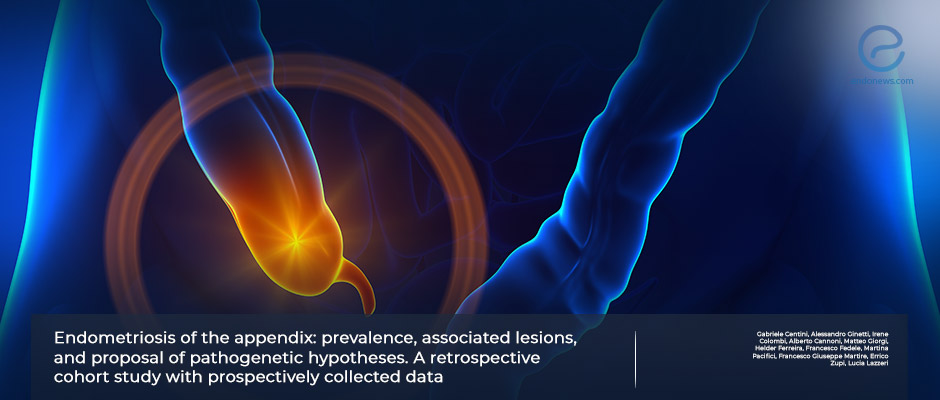Appendiceal Endometriosis Associated With Ovarian and Bladder Endometriosis
Oct 17, 2024
Appendiceal, ovarian, and bladder endometriosis are significantly associated.
Key Points
Highlights:
- Appendiceal, ovarian, and bladder endometriosis are significantly associated.
Importance:
- This finding gives clues about the way the disease may spread among the pelvic organs.
- It also highlights the importance of counseling women about the possible need for appendectomy during endometriosis surgery.
What’s done here:
- This is a monocentric observational, retrospective, cohort study on 460 patients with endometriosis who underwent laparoscopic surgery.
Key results:
- The prevalence of concomitant ovarian and bladder endometriosis was higher in patients with appendiceal endometriosis compared to those without.
- Isolated ovarian endometriosis was significantly associated to appendiceal endometriosis.
- Patients with appendiceal endometriosis had around 4 times higher risk of also having ovarian and bladder endometriosis.
Limitation
- This was a monocentric study and the findings should be confirmed in other groups of patients.
Lay Summary
There is a significant association between appendiceal, ovarian, and bladder endometriosis, according to a new study published in the scientific journal Archives of Gynecology and Obstetrics. This could be explained by the spread of the disease via the shedding of endometrioma fluid.
“Given the prevalence of appendiceal involvement, counseling regarding the potential need for appendectomy during endometriosis surgery should be considered,” the authors of the study said.
In order to assess the prevalence of appendiceal endometriosis and its association with endometriosis affecting other areas in the pelvic region, a team of researchers led by Dr. Lucia Lazzeri from the Department of Molecular and Developmental Medicine, Obstetrics and Gynaecology at the University of Siena in Siena, Italy conducted an observational, retrospective, cohort study in 460 patients with endometriosis who underwent laparoscopic surgery.
A total of 13 patients had appendiceal involvement.
The prevalence of concomitant ovarian endometriosis in patients with appendiceal endometriosis was higher at 53.9% compared to 21% in those with non-appendiceal endometriosis. Similarly, the prevalence of concomitant of bladder endometriosis was 38.4% in those with appendiceal endometriosis compared to 11.4% is those wuhtout.
Isolated ovarian endometriosis was significantly associated with appendiceal endometriosis compared to isolated uterosacral ligament endometriosis or uterosacral ligament and ovarian endometriosis combined.
Statistical analysis showed a 4.1 times higher risk of ovarian endometriosis and 4.4 times higher risk of bladder endometriosis in patients with appendiceal endometriosis. It also showed a 0.1 times risk of concomitant uterosacral ligament endometriosis.
Research Source: https://pubmed.ncbi.nlm.nih.gov/39143333/
Appendiceal endometriosis ovarian endometriosis bladder endometriosis

